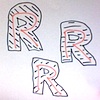When it comes to writing, everyone’s favorite acronym is K.I.S.S. – Keep It Simple, Stupid. Sage advice, but have you ever asked why? Well here’s another acronym for you: S.I.S. – Simple Ideas Succeed.
I often work with technology companies where the product or service is likely to be anything but simple. The desire to explain and build logical chains from features to benefits often eclipses the ability for an idea to get attention. Think about Albert Einstein for a second. Chances are E = mc2 comes to mind before the words “Theory of Relativity” jump into your head. And unless you happen to be a physicist your thoughts are more likely to run to an image of the frazzled-haired genius and not to the concept of energy-mass equivalence.
Does E = mc2 really tell me anything about physics or the nature of the universe? Not really. Not on its own. Not to the uninitiated, or at least not without a good hour spent watching a PBS special, but it is has become a familiar surrogate for a complex idea. The symbol spreads farther and more easily than the underlying complex theory. Thus I give you the sibling acronym, part 2: S.I.S. – Symbols for (complex) Ideas Spread.
Yes, I’m torturing an acronym, but if you want your idea to spread you’ve got to make it portable, and simple ideas are easier to carry around. If the idea can’t be easily reduced to a simple phrase, then roll up your sleeves and keep trying. Look for a surrogate, or an icon that can be invested with meaning. You’ve got to do the work so that the job of spreading your idea, the job you are asking your customers, partners and prospects to do for you, is as easy as possible. That leads to the final sibling acronym for the day: S.I.S. – Simplicity Isn’t Simple.











You Can't Swim on Dry Land
Have you ever tried to walk across the bottom of the deep end of a swimming pool? It may have been fun bouncing along under the surface, but you certainly didn’t get anywhere very fast. What works very efficiently on dry land is almost completely ineffectual under the water.
Now imagine trying to swim down a sidewalk. Sounds painful doesn’t it? Without the buoyancy you would just grind in place. Change your medium and what was once an asset can become a liability, a successful tactic might just be limiting your progress or bringing it to a grinding halt.
I’m a big believer in paying attention to context, what works in print may not work in radio. What works on the radio, might not work for TV. The big new swimming pool is social media. Not every marketing tactic is going to work the same in the social web. Some old standbys may not work at all. Trying too hard to control the message and interrupting people will leave you bouncing in one place running out of air. Sharing, educating, listening and participating seem to be the better strokes in these new waters.